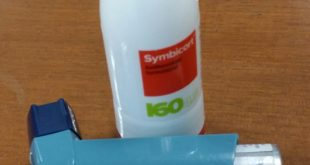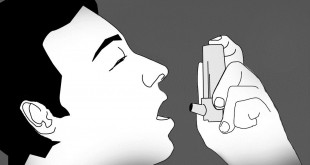Many people with asthma believe exercise is not an option for them, that it will do more harm than good. The truth is that most asthmatics would likely benefit from some form of regular physical activity.
MYTH 1
You cannot exercise and play sports if you have asthma
FACT 1
You can exercise and play sports even if you have asthma, but you should take your medicines regularly. Swimming is good for asthma. On the other hand, exercising in dry, cold air may be a trigger for some people. It is important that you take your preventer medicines regularly, as prescribed by your doctor. Some asthmatics benefit by using a Reliever medication before exercising so always keep your Reliever medicine handy too. Do inform your team members, your friends, your gym instructor or your coach about what they should do in case you have an attack.
Don’t let asthma come in the way of your dreams. It is not a deterrent to being a winner in sports or in life.
MYTH 2
I’m allergic to exercise
FACT 2
If asthma doesn’t stop weekend athletes in their tracks, why can’t they exercise? It’s not because they are “allergic” to exercise, but rather because many things trigger shortness of breath, including deconditioning or hyperventilation, inhalant allergy, airway irritants, vocal cord dysfunction, and, with preexistent airflow obstruction, air trapping.
MYTH 3
Everyone with asthma experiences exercise-induced asthma.
FACT 3
Although exercise is one trigger for asthma, which is called Exercise-Induced Asthma (EIA), not everyone with asthma necessarily experiences asthma during exercise. Some asthma is triggered by allergens, such as pollen, animal dander, dust, mould and cockroaches. Other types of asthma can be triggered by environmental irritants, such as cigarette smoke, while other people might react to certain medications, sulphites in foods or viral upper respiratory infections, such as the common cold.
If you have EIA, it means the tubes that bring air into and out of your lungs narrow during exercise, which causes symptoms of asthma. Symptoms will occur within five to 20 minutes into exercise, and can include wheezing, chest tightness, cough, shortness of breath and sometimes chest pain.
MYTH 4
Managing exercise – induced asthma required specialised help
FACT 4
Despite the myth, if you treat the asthma appropriately, you will treat the exercise triggering. For the majority of patients, exercise triggering is the most visible sign of chronic asthma. Patients with asthma notice that, yes, they need their inhaler with exercise, but if you inquire further, you will often find that patients use their rescue medication much more often than just with activity.
There are non pharmacologic ways to approach treatment of exercise-triggered asthma. One consideration is trigger avoidance. If exposure to some triggers can be reduced, the inflammatory process in the airways that drives bronchial hyperactivity can be down regulated, and less medication would be required. Tobacco smoke is the most common trigger and is extraordinarily virulent in aggravating asthma. Allergens and sinusitis are also very important triggers. Switching from one exercise to another can also help prevent attacks.
MYTH 5
Sports and physical activity make asthma worse.
FACT 5
Physical activity should be part of every child’s life, including those with asthma. Asthma should not get in the way of physical activity. Your child may need medication in order to play comfortably. Always check with your doctor first.
| Last Review | : | 2 December 2013 |
| Writer | : | Dr. Noor Hafiza b. Noordin |
| Reviewer | Dr. Rus Anida b. Awang |
 PENDIDIKAN PESAKIT Kementerian Kesihatan Malaysia
PENDIDIKAN PESAKIT Kementerian Kesihatan Malaysia




